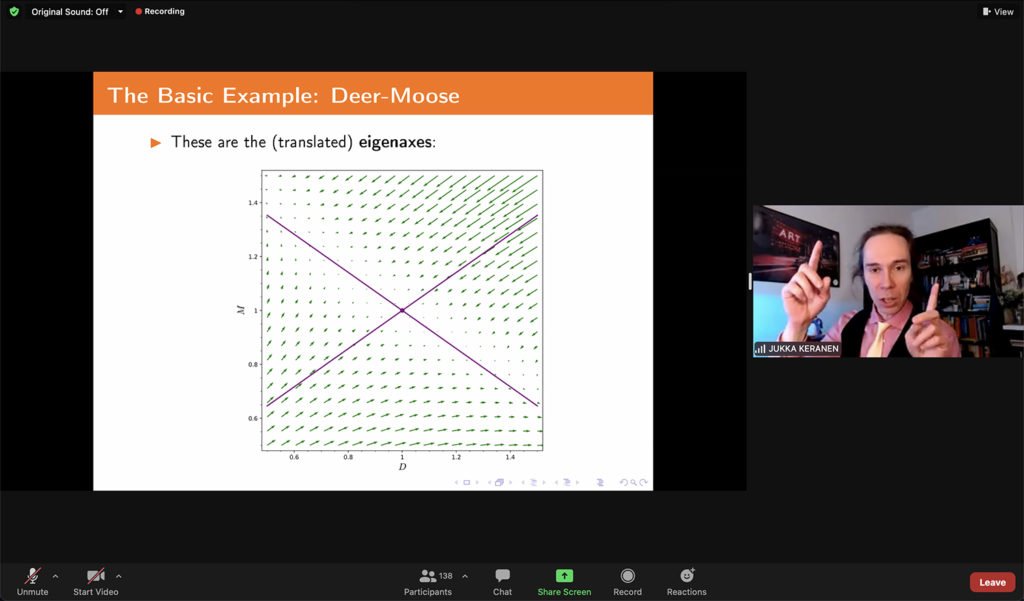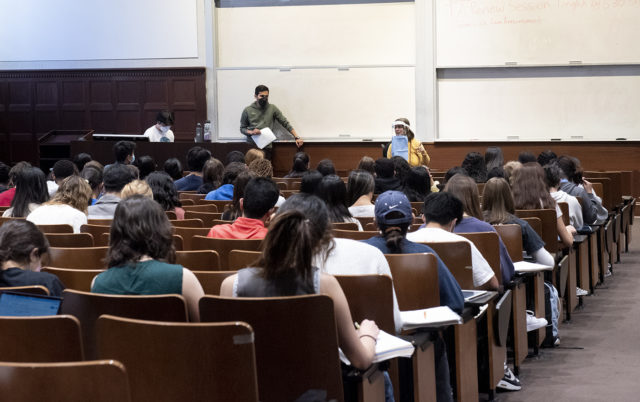This post was updated March 10 at 11:10 a.m.
UCLA researchers published a study discussing the success of the Life Sciences 30 series, a set of classes at UCLA designed to revitalize the way life sciences students learn calculus.
The study published Feb. 12 revealed that the Life Sciences 30 series showcased the applicability of math in biology better than traditional introductory calculus courses for life sciences students, prepared students for subsequent science courses and narrowed gender and minority performance gaps.
Administrators first offered the series in 2013 as a response to students’ dissatisfaction with how calculus was traditionally taught in the life sciences department, according to the study.
In 2013, researchers conducted a survey of UCLA students who had completed one year of Math 3: “Calculus for Life Sciences,” and 58.8% of respondents said the course did not include examples from the life sciences. Additionally, 83.7% said their interest in biology had not increased after taking the series, and 48.6% said they did not see how the learned material could be applied to other courses.
Faculty members were similarly dissatisfied with the course, said Alan Garfinkel, the lead author of the study and a professor of integrative biology and physiology.
Math 3 did not teach important biological principles, such as mathematically modeling interactions between species, he said. Moreover, these biologically relevant mathematical concepts are more complex than what is possible with pen and paper, he added.
“Biology needs its own math,” he said.
According to the study, administrators began developing the Life Sciences 30 series in 2012. The series was created not to show incidental examples of math in biology but to teach math in the context of biology, Garfinkel said. The series begins with students analyzing a predator-prey model of sharks and tunas and learning how to create a mathematical representation of that system, he added.
“In our case, biology is not an example, it’s the reason for the class,” he said.

The class also includes a weekly laboratory component in which students practice programming to recreate the dynamic systems and models they learned in lecture, said Blaire Van Valkenburgh, the senior author of the study and retired associate dean of academic programs in the department of life sciences. The introduction of coding and the development of programming skills can better prepare students who want to enter biological research fields, she added.
“There’s very little science that is done these days that doesn’t require either using statistical modeling or, if you’re actually trying to model a dynamic system, creating some sort of program (where) you can fool around with the variables,” she said. “We want the students to be comfortable with it and enjoy it if possible.”
After implementing the course, the researchers surveyed students who had taken the Life Sciences 30 series in fall 2014 and winter 2015. The survey revealed 94.2% of respondents said they saw the real-life applicability of the material, and 79.7% said their confidence in their mathematics ability increased after taking the course – a sharp rise from the 2013 Math 3 respondents who said they did not see the biological applications and felt less confident in math.
Samantha Eberle, a first-year biology student currently enrolled in Life Sciences 30B, said the series has made her feel more confident in her understanding of the purpose of what she is studying.
“It’s cool to see how it genuinely connects to real-world stuff because you can take calculus and do equations all you want, but actually seeing how things in the world affect each other, … I think it’s just really cool that math could actually come to life,” she said.
Eberle said she also enjoyed being able to draw connections between the Life Sciences 30 curriculum and her other courses, such as the Life Sciences 7 series. According to the study, the course had better prepared students for their other introductory courses in chemistry, biology and physics.
Life Sciences 30 may also help keep students motivated to continue pursuing STEM degrees. According to the study, 13% of students stopped pursuing degrees in science, technology, engineering and math after taking the traditional UCLA calculus series. An additional 28% left these degree programs after taking subsequent introductory STEM courses. The students who left these degree programs were disproportionally women and people from underrepresented communities.
However, study results showed that Life Sciences 30 had narrowed the gender and minority student achievement gaps as the grades of students from underrepresented communities rose, Garfinkel said. The researchers now hope to confirm these findings by conducting further research with larger groups of students, he added.
To address achievement gaps, the Life Sciences 30 series offers resources such as graduate and undergraduate teaching assistants, learning assistants and group work, that support student learning, said Mahika Nayak, a fourth-year neuroscience student who was a learning assistant for Life Sciences 30 for four academic quarters and has been an undergraduate TA for Life Sciences 30 for three quarters.
“When you add all these scaffolds into it and you find different ways to support students that come from very different backgrounds, you increase the chances that they also then feel comfortable asking for help when they’re struggling,” she said.
The researchers and Life Sciences 30 faculty are still working to narrow that achievement gap further, said Jukka Keranen, an instructor for the Life Sciences 30 series and an academic administrator of the Life Sciences Core Education.
Keranen added that in the fall, he will be holding the class in a flipped classroom format, in which students first interact with the material on their own time before class and then consolidate their understanding through active participation during lectures. His past success with this format makes him optimistic that new teaching techniques such as the flipped classroom method could further narrow gender and minority student achievement gaps, he said.
“Calculus has been a fantastic filter for keeping minorities and women out of STEM careers,” Garfinkel said. “It’s time for that to end.”


Comments are closed.